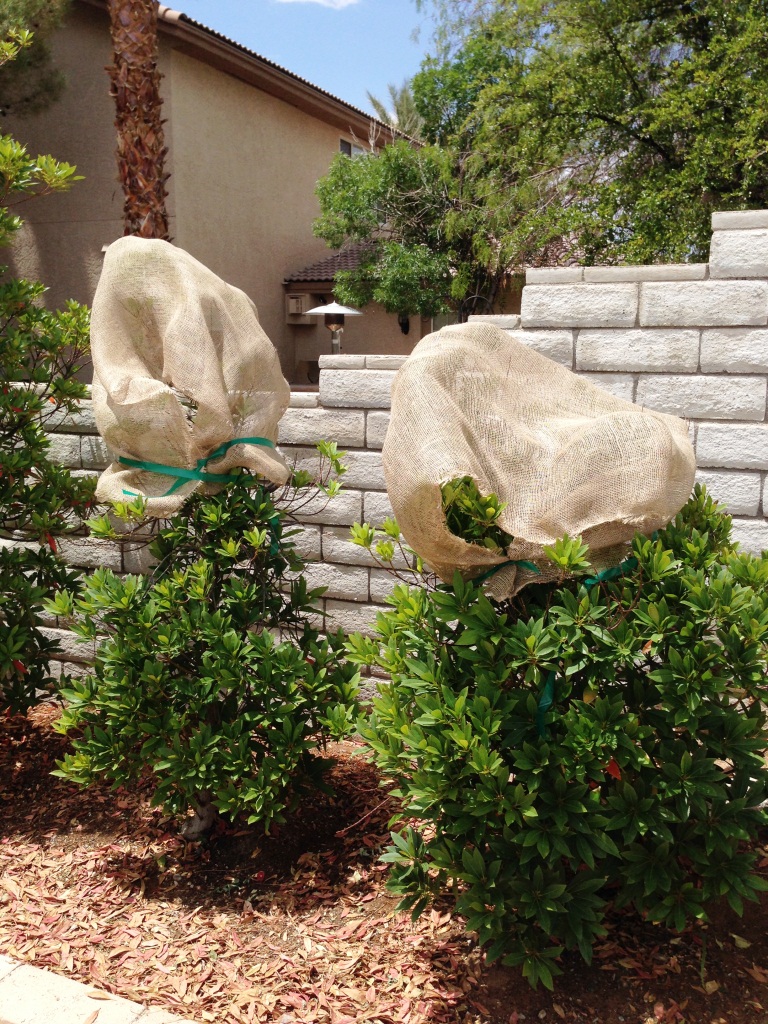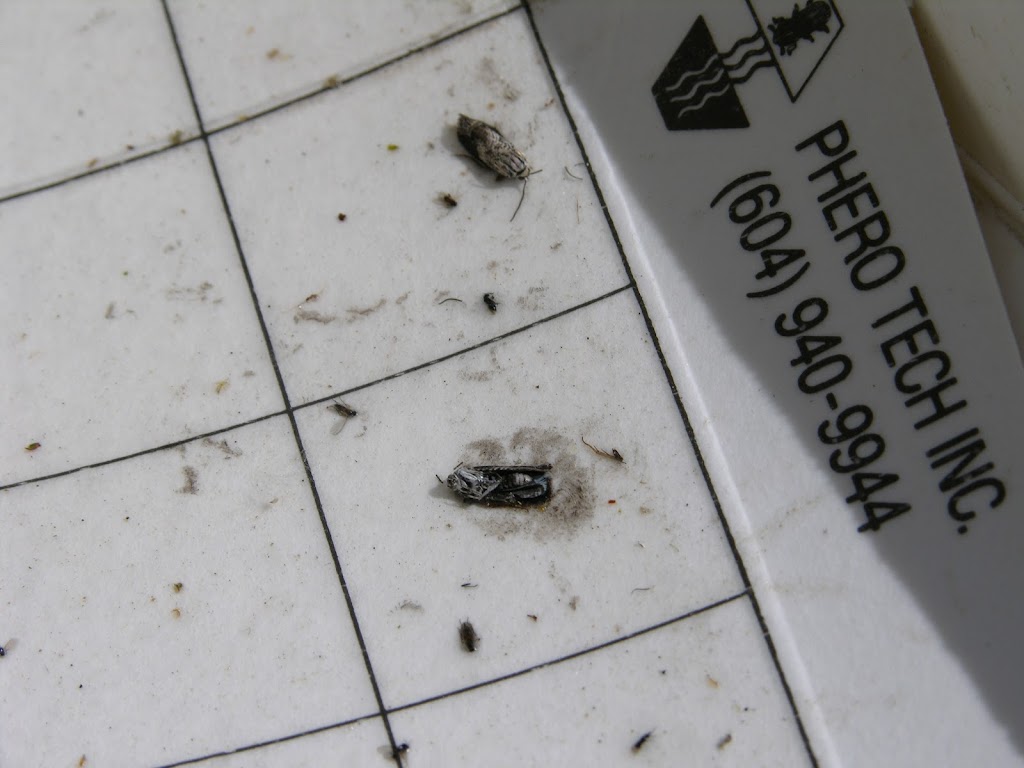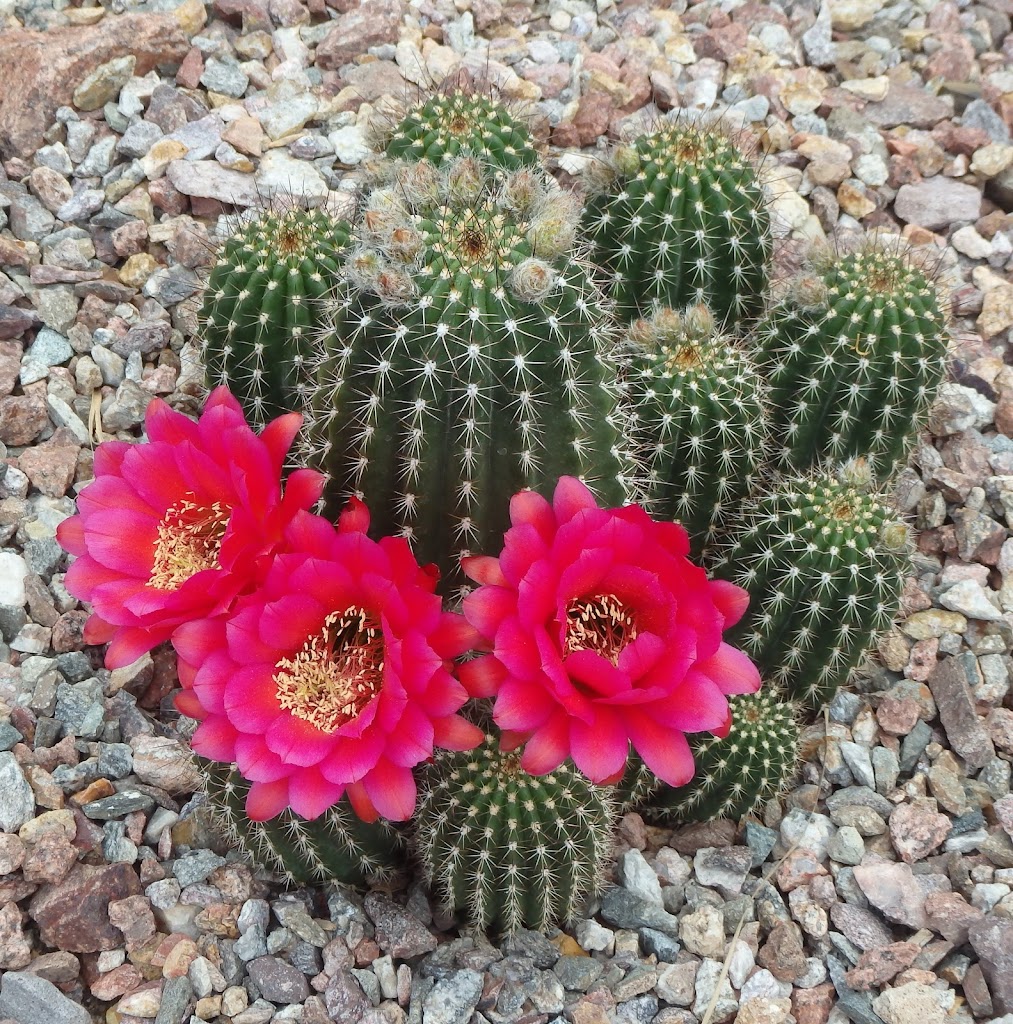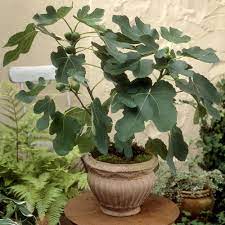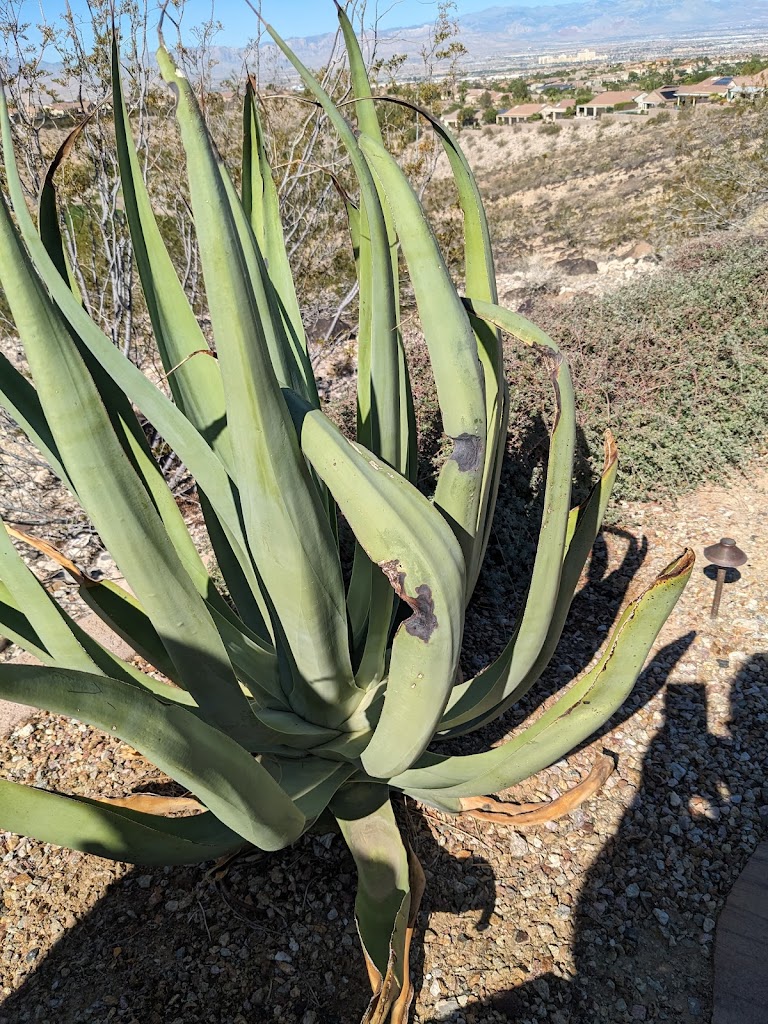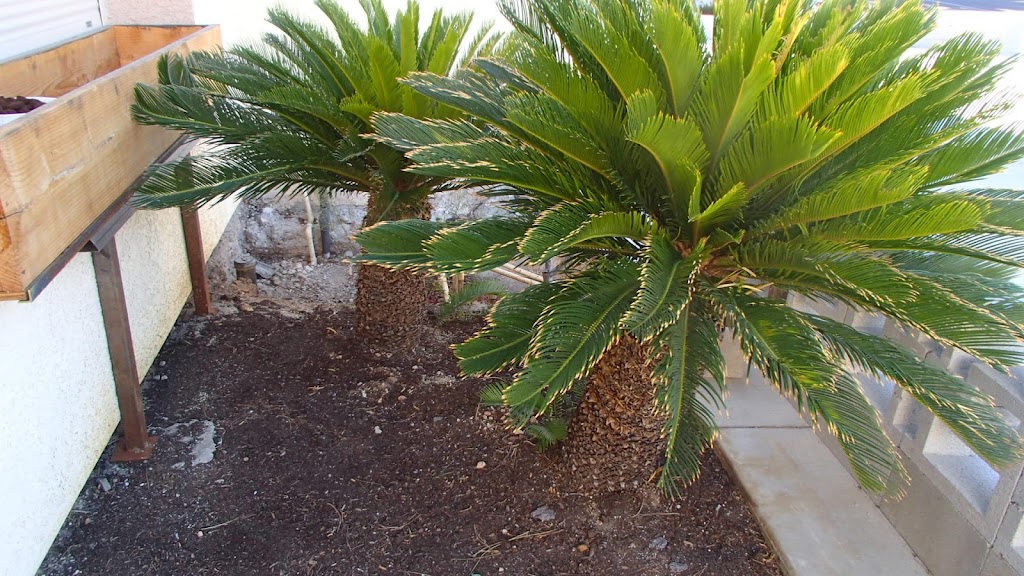Designing a landscape for only energy conservation (an example is lowering the cost of running the air conditioner) is quite simple. All you must do is ask yourself, “Which sides of the home are the hottest?” Create shade on the walls and windows close to the house for these hot sides. Try not using plants when you do this. Use them if you must. Creating shade that doesn’t use water requires more “brainwork” but may be necessary in the desert. Usually, the hottest areas are the exposed South and West walls and windows of a home. If you don’t know which sides are hot, use a “temperature gun” (infrared laser for measuring temperature) during the hottest times of the day. You can buy an inexpensive but accurate gun for less than $25. The hottest areas are typically handled by shading the walls and windows on these hot sides rather than shading the roof. Roofs are usually better insulated than the walls and, in particular, windows. Selecting plants to save summer electrical cost is quite simple since shading the south and west walls and windows is most important. Select plants that are “winter deciduous” so that the sun warms the house during the winter months. If water is plentiful, how much water these plants use is not important. To lower electrical costs, regardless of water, always shade the hot walls and windows of a home. Irrigation design is important. I can’t stress the importance of using “hydrozones”. Hydrozoning is when the valves control when to water plants. Xeric (desert) versus mesic (nondesert) plant water use relies on how frequently each are watered. Use mesic plants when water is provided to them at the same time. How deep plants are watered is adjustable by adding or subtracting drips. How frequently they are watered is not. Xeric plants are not watered as often as mesic plants if you want to conserve water. This means plants are matched to a specific irrigation valve; xeric plants are put on one valve and mesic plants are put on a separate valve. This means you must know the difference between xeric (desert) and mesic (nondesert) plants. Xeric or desert plants will grow more rapidly than mesic, or non-desert plants, if they are watered like mesic plants. That’s just they way they are. Xeric plants are more “adjustable” in their growth if they are all watered at the same time, and you can adjust the frequency of watering. When mesic and xeric plants are placed on the same valve, mesic plants will signal you to water and not the other way around. When water is scarce, xeric plants (desert plants) tolerate dry soil better than mesic plants. They have capabilities of saving water through many different traits including leaf drop, changes in leaf and plant size, as well as changes to the plant at the genetic/molecular level. Xeric plants handle water shortages more efficiently than mesic plants. Being from the desert, xeric plants have evolved to soil drought. Water xeric plants less often. This means watering them with a separate irrigation valve (hydrozones). Because of this, xeric plants can get by (and often benefit) when watered less frequently than mesic plants. For instance, foothills (not Blue or ‘Desert Museum’) palo verde (Parkinsonia microphylla or Cercidium microphyllum, depending on the source of its scientific name) is a true xeric, desert, or low water use plant. It grows in flat, dry areas throughout the Sonoran Desert of the American southwest. It can survive in dry soil for long periods of time. They can’t survive without any water, but they will require watering, deeply, less often. When water is limited, xeric plant growth first begins to slow or stop. That can be hard to see. Controlling their size, controls their water use. If dry soils continue, xeric plants start dropping their leaves. That is easier to see. Fewer leaves mean there are fewer leaves present to lose water. The canopy begins “thinning out.” It’s time to water! If the soil continues to remain dry, then remaining leaves begin scorching and branches begin dying. Plants are starting to look bad. In the case of cacti, their stems may begin to shrivel. You don’t want limb dieback, or cactus shriveling, in a landscape. That’s not pretty. On the flipside, they may not look the best when that dry spell is over, but at least they have survived! In a landscape, deeply watering these plants once every 4 to 8 weeks is usually enough. Observing xeric plants regularly (once a week in the summer) will tell you if it’s time to water or hold off. Branch dieback in palo verde and other trees (mostly mesic) can be confused with the palo verde root borer. Occasionally a single, isolated branch will begin dying back to the trunk during the summer if these insects have been feeding on the roots. In cases like these, a systemic insecticide for borers might be the only solution available. As with other plants, apply this insecticide only after flowering to avoid the risk of hurting pollinators like honeybees. How much water is applied is controlled by the size of the emitters (two-, three-, four-, or 5-gallon drip emitters) or a moat surrounding trees and shrubs. For 10- to 12-foot-tall trees, flat moats about 6 feet in diameter, and 2 to 3 inches tall, will work. Figure that in most level soils, 1 inch of water will wet roots about 15 to 18 inches deep. My experience tells me that at least half the area under the tree’s canopy should receive this water. Once the roots of a tree are watered deeply enough, the only changes that need to be made to an irrigation timer are seasonal. If you try grow deep-rooted, xeric (desert) trees in a fescue lawn (called a mixed landscape which I don’t recommend), the tree frequently dies, or “wiggles” in the soil. This is because it is watered every day the
